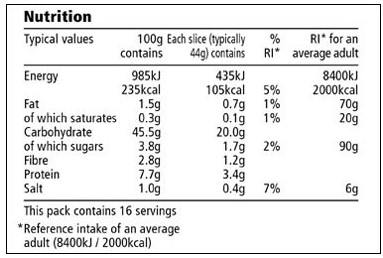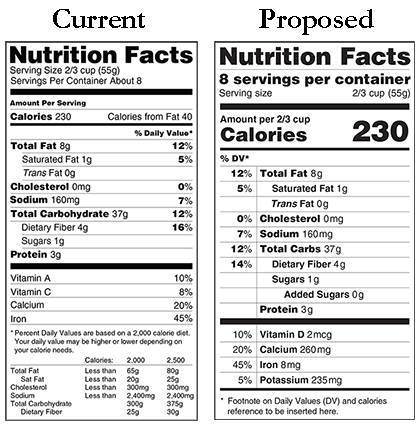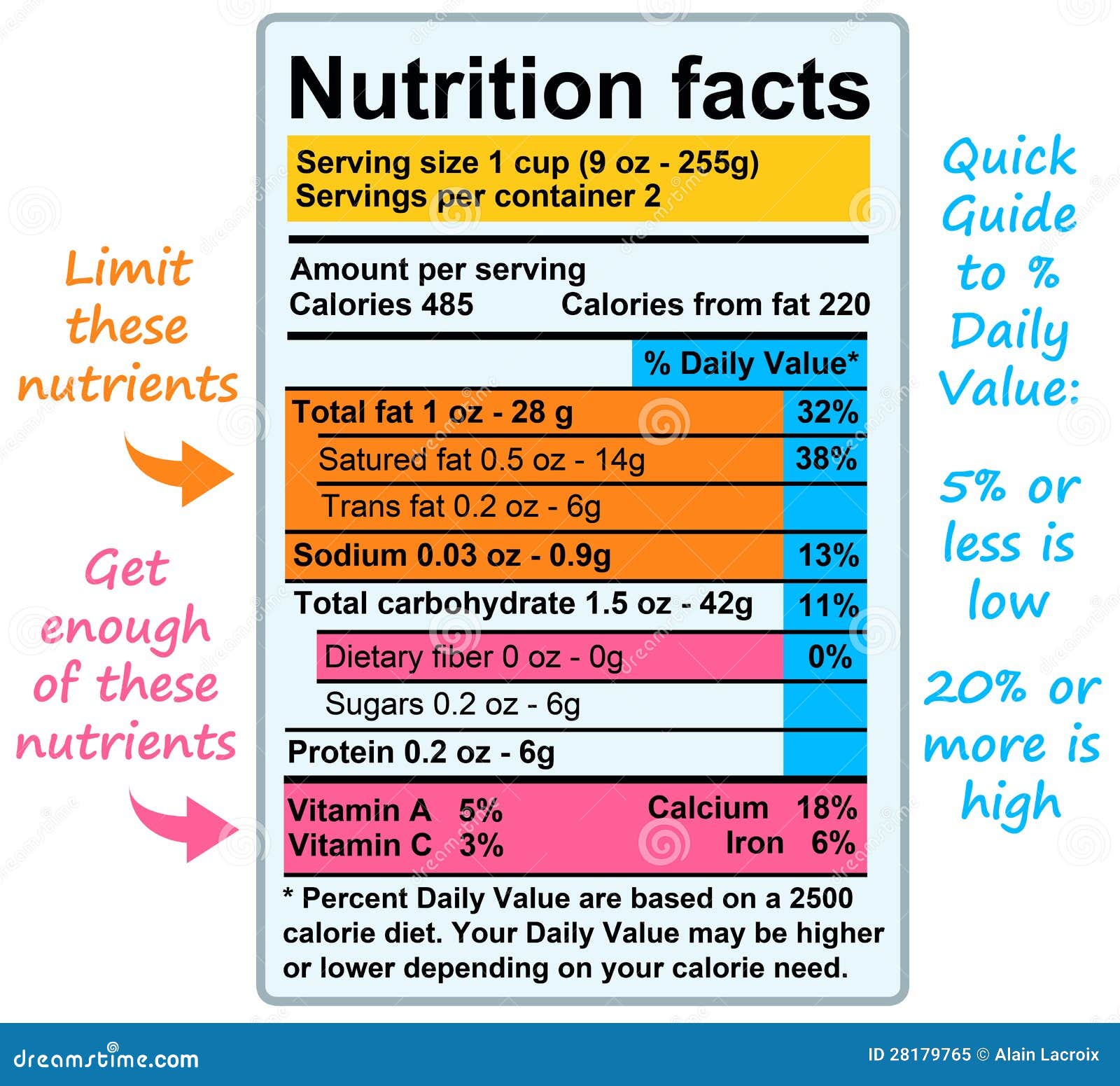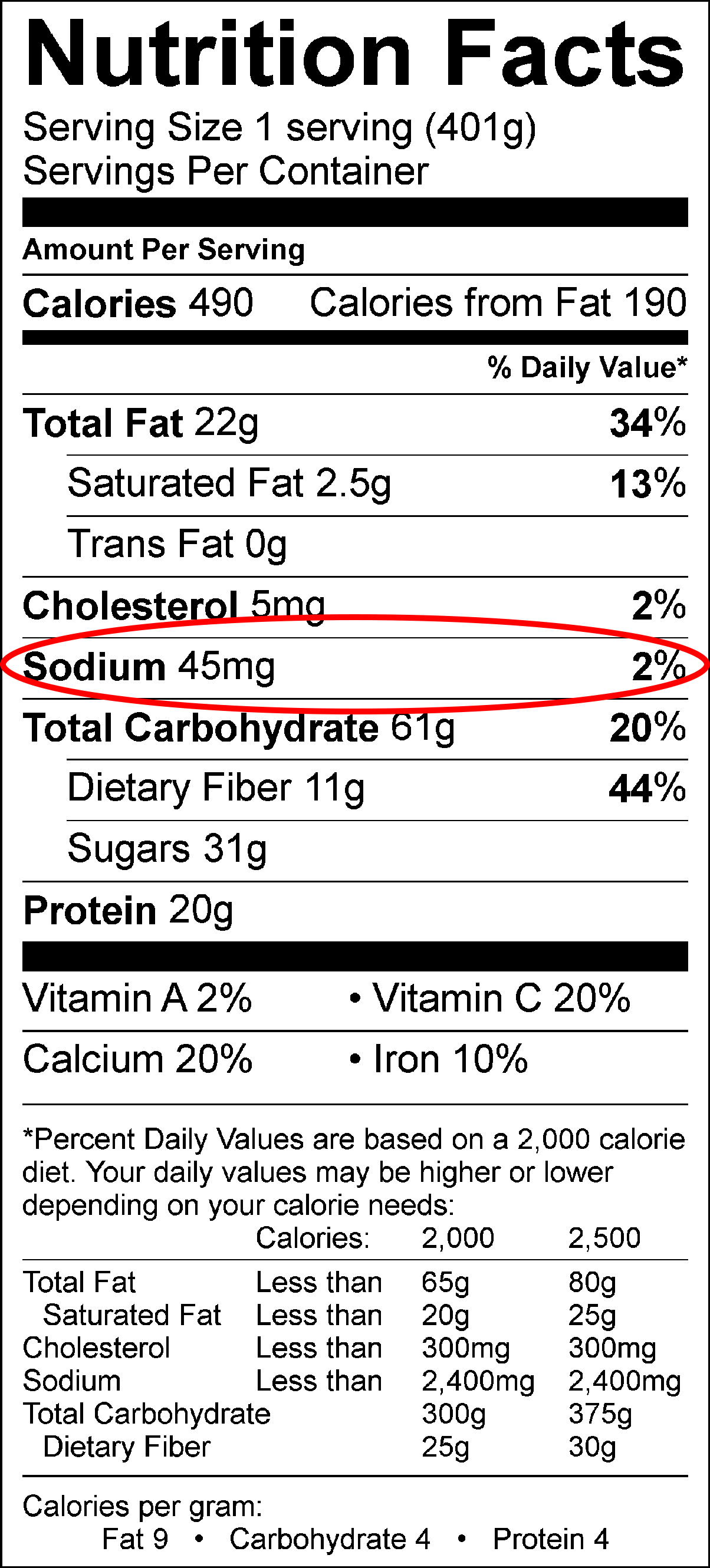38 how to read nutrition labels for healthy eating
How to Read Nutrition Labels in 2019 - Healthline Some important concepts to remember to help you use nutrition labels for healthy choices include: knowing that your calorie needs may differ from the 2,000 calories-per-day baseline on labels... How to Read the Nutrition Facts Label on Packaged Foods Sodium. Many people get far too much salt, or sodium. Most of it is in packaged foods and restaurant items. Limit salt to 2,300 milligrams (about 1 teaspoon) daily. If you have high blood pressure ...
PDF how to understand food labels - Eat For Health Instead learn a few simple label reading tips to choose healthy foods and drinks, for yourself. You can also use the label to help you lose weight by limiting foods that are high in energy per serve. 100g Column and Serving Size If comparing nutrients in similar food products use the per 100g column.

How to read nutrition labels for healthy eating
How To Read Nutrition Food Labels And Eat Healthy ... Daily value is listed with the symbol "% DV" for nutrients, such as fats, carbohydrates and protein. The updated label also has a new footnote explaining the meaning of Percent Daily Value (DV). Use DV to check if a serving is high or low in a nutrient and to compare food products. How to Read Food Labels Without Being Tricked A good rule of thumb is to scan the first three ingredients, as they make up the largest part of what you're eating. If the first ingredients include refined grains, a type of sugar, or... How to read food labels - Heart Foundation NZ How to read food labels. Taking a little bit of extra time to read food labels when you're shopping can have big pay-offs, but it can be hard to make sense of all those numbers. Here's a quick guide to help you navigate the supermarket and decipher food labels.
How to read nutrition labels for healthy eating. PDF A Guide to Reading Food Labels - University of Rochester Make healthy choices easier by understanding the sections of the Nutrition Facts label. 1. Serving Size. The serving size is a measured amount of food. In the sample label, the serving size is one cup, and there are two servings per container. If you ate the whole container, you would eat two cups, which doubles the calories and other nutrient ... The Basics of the Nutrition Facts Label The following is a quick guide to reading the Nutrition Facts label. Step 1: Start with the Serving Size. Look here for both the serving size (the amount people typically eat at one time) and the number of servings in the package. Compare your portion size (the amount you actually eat) to the serving size listed on the panel. How to Understand and Use the Nutrition Facts Label | FDA To achieve or maintain a healthy body weight, balance the number of calories you eat and drink with the number of calories your body uses. 2,000 calories a day is used as a general guide for... How to Read Labels for Healthy Eating - The Healthy Giraffe Read the ingredients on the product label required by the FDA and the FDA states, "The ingredients are listed in order of predominance, with the ingredients used in the greatest amount first, followed in descending order by those in smaller amounts."
How To Read Nutrition Labels (Like a Pro) - Ditch The Carbs The front of the box states it is high in fibre, cholesterol-lowering and has a 4.5 star rating, but look at the nutrition label and it tells another story. Per ¾ cup serving (and most people serve 1-2 cups) + ½ cup milk = 37.9g carbs, 15.5g sugars. The only reason it has any vitamins is because it has been fortified. How to read food labels: MedlinePlus Medical Encyclopedia Dietary fiber is listed just below total carbs. Buy foods with at least 3 to 4 grams of fiber per serving. Whole-grain breads, fruits and vegetables, and beans and legumes are high in fiber. Check the total fat in 1 serving. Pay special attention to the amount of saturated fat in 1 serving. Choose foods that are low in saturated fat. How to understand food labels | Eat For Health The Nutrition Information Panel on a food label offers the simplest and easiest way to choose foods with less saturated fat, salt (sodium), added sugars and kilojoules, and more fibre. It can also be used to decide how large one serve of a food group choice or discretionary food would be and whether it's worth the kilojoules. How to Read Food Labels for a Heart-Healthy Diet | Johns ... In general if you take the total carbs and subtract the fiber, you get net carbs, a better indicator of what the body will absorb into the blood stream. The lower the net carbs, the better." Berries: "I usually choose blueberries, which are anti-inflammatory and not as high in sugar as bananas."
Food label reading: Read before you eat - PMC The US Dietary Guidelines 2010 states that "The ingredients list can be used to find out whether a food or beverage contains synthetic trans fats, solid fats, added sugars, whole grains, and refined grains." Ingredient lists contain important nutrition information that can contribute to the consumer's assessment of a food's healthfulness. Nutrition Facts: How to Read Nutrition Labels Look for code words like "partially hydrogenated oil" in the ingredients list and limit those foods as much as you can. 5. Cholesterol This sticky, fatty substance comes from foods like meat, whole... How To Read Food and Beverage Labels | National Institute ... Read the nutrition label as a whole to determine how a particular food or drink fits into your healthy eating pattern . Is lower % DV always healthier? If a food has 5% DV or less of a nutrient per serving, it is considered low in that nutrient. If it has 20% DV or more of a nutrient per serving, it is considered high in that nutrient. PDF How Do I Understand the "Nutrition Facts" Label? Nutrition Facts label and ingredient list. When you go grocery shopping, take time to read the Nutrition Facts labels on the foods you purchase. Compare the nutrients and calories in one food to those in another. The information may surprise you. Make sure you aren't buying foods high in calories, saturated fat, trans fat, sodium and added ...
How To Read Food Labels - 10 Tips | Pritikin Program For ... Always read the Nutrition Facts label and the ingredient list. They contain information that can really help you determine how healthy a food is. Crackers, for example, may advertise on the front of the box that they're "Trans Fat Free," but in the ingredient list you may find fats, like palm oil and coconut oil, that are just as artery ...
Quick Tips for Reading the Nutrition Facts Label 1. Use a pair of scissors to cut along the dotted lines. 2. Fold along the center line. 3. Keep the Tip Card in your wallet or purse. Calories230 Amount per serving Serving size 2/3 cup (55g) 8...
How to Use the Nutrition Fact Label, Eat Right, NHLBI, NIH Get enough of these: potassium, fiber, vitamins A and C, calcium, and iron Use the Percent Daily Value (% DV) column when possible; 5% DV or less is low, 20% DV or more is high Visit the Smart Food Shopping page and learn how the label can help you choose foods lower in calories, fat, and added sugar to help maintain a healthy weight.
Understanding Food Nutrition Labels | American Heart ... 1 - Start with the serving information at the top. This will tell you the size of a single serving and the total number of servings per container (package). 2 - Next, check total calories per serving and container. Pay attention to the calories per serving and how many calories you're really consuming if you eat the whole package.
Food Labels 101: Understanding the Nutrition Facts Label ... Nutrition labels can be a great tool for managing a heart healthy diet, which makes it very important that you understand what you're looking at when you read a label. Nutrition labels are based on a daily 2,000 calorie diet. Depending on your age, gender and activity level, you may need to consume more or less than 2,000 calories per day, so ...
How to Read a Nutrition Label - Arthritis Foundation Here are some tips for deciphering nutrition label information. Label Information Focus on the Fats Fill up on Fiber Skimp on Sodium Look for Must-Have Nutrients Shopping Now that you're savvy about nutrition label information, you can grocery shop with a more discerning eye. Nutrition View All Articles Nutrition
How To Read Food Labels For Healthy Eating | Stop Getting ... How To Read Food Labels For Healthy Eating Commentary: Now this topic became important to me, because a client recently asked me this question. We had gone over the basic health principles , which are unprocessed meals where you get a variety of proteins fats veggies and carbs.
How to read nutrition labels | safefood Nutrition information can be found on the back/side of food labels. Sometimes you will also find a snapshot of this information on the front of pack. Nutrition information is displayed per 100g and sometimes per recommended serving. Use the per 100g column to compare products. Look at the recommended portion size.
How to Read Food Labels for Healthy Eating | On The Table Healthy eating goes well-beyond the caloric value and can be accomplished with the following food label tips: Acknowledge the Serving Size The serving size should always be checked first, as all the information indicated on the Nutrition Facts label is based on this number.

How To Read Food Nutrition Labels: Learn The Nutritional Content And Calories Of What You're ...
How to read food labels - Heart Foundation NZ How to read food labels. Taking a little bit of extra time to read food labels when you're shopping can have big pay-offs, but it can be hard to make sense of all those numbers. Here's a quick guide to help you navigate the supermarket and decipher food labels.
How to Read Food Labels Without Being Tricked A good rule of thumb is to scan the first three ingredients, as they make up the largest part of what you're eating. If the first ingredients include refined grains, a type of sugar, or...

Get the best out of what ya buy! | Reading food labels, Nutrition labels, Nutrition facts label
How To Read Nutrition Food Labels And Eat Healthy ... Daily value is listed with the symbol "% DV" for nutrients, such as fats, carbohydrates and protein. The updated label also has a new footnote explaining the meaning of Percent Daily Value (DV). Use DV to check if a serving is high or low in a nutrient and to compare food products.










Post a Comment for "38 how to read nutrition labels for healthy eating"